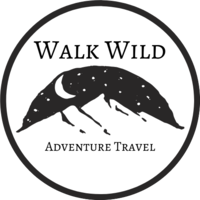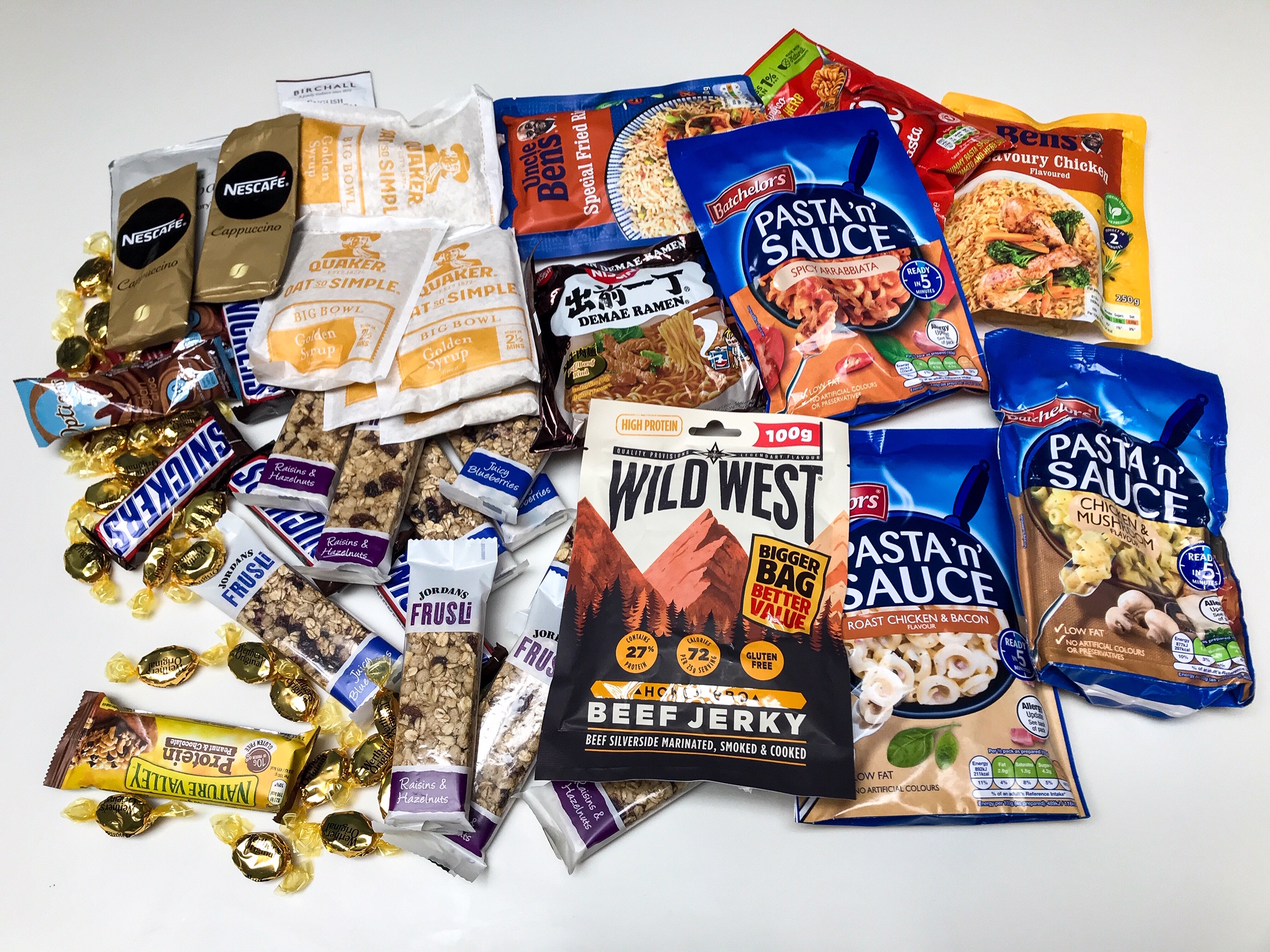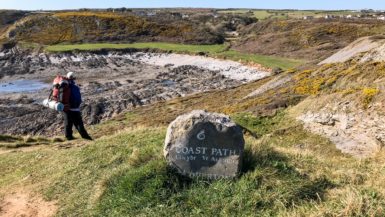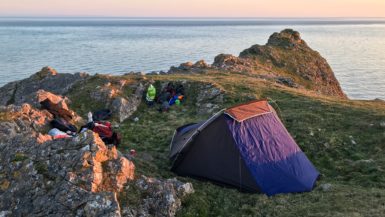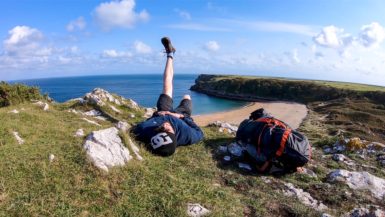Top Tips for What Hiking Food to Bring on a Multi-day Trip
5 Minute Read
If you’re planning a thru hike, multi-day walk, or overnight camping trip – you’ll have to bring your food with you. It needs to be lightweight, non-perishable, easy to store, energy dense, nutritious, and of course – tasty!
This may sound like an overwhelming number of things to consider, but this guide should give you some tips to set you on the right track.
This post is about what hiking food you need to bring with you to make sure you tick as many of these boxes as possible!
I recently used these food items on long distance hiking trips in the UK walking Hadrian’s Wall Path (95 miles), wild camping in the Peak District, and hiking the Pembrokeshire Coast Path (184 miles). So I know this food works!
- Cooking Equipment
- Breakfast
- Snacks
- Dinner
- Drinks
If reading isn’t your thing, check out the video below which has all the same information on what hiking food you need to eat.
This page contains affiliate links. This means I make a commission if you buy a product I have recommended (at no extra cost to you). All recommendations I give are genuine and my own. Thanks for the support!
See also:
Multi-Day Hike Kit List
Day Hiking Gear Essentials
1. Cooking Equipment
There are a variety of stoves and equipment you can cook on. Jetboil seems to be the most popular choice on the hiking circuit as it’s light, fast at boiling, and fuel efficient – but it’s also expensive!
If you’re more traditional, or from a military background, you might prefer a trangia spirit burner.
Personally, I use a fold out camping stove with a screw on gas canister. I use this set up to boil water in a small stainless steel cup which I then use to make hot drinks, pasta, and porridge.
To keep the heat in, I simply fold some tin foil over the cup as I cook. I find this is the right compromise between being cheap, easy to use, and fairly lightweight.
Generally, I bring a couple of lighters with me to spark the stove. You can also use a flintstone, windproof matches, or any tool that produces a spark.
A spork is the only cooking utensil I bring – we’re trying to keep this light after all! It’s east to stir and eat using the same spork and there’s less to carry and wash up at the end of your meal.
I use a soft water bottle to drink from as I find this stores nicely in my bag. It has a screw top so works well with my water filter. I can fill the bottle from a river or lake and drink through the filter no problem!
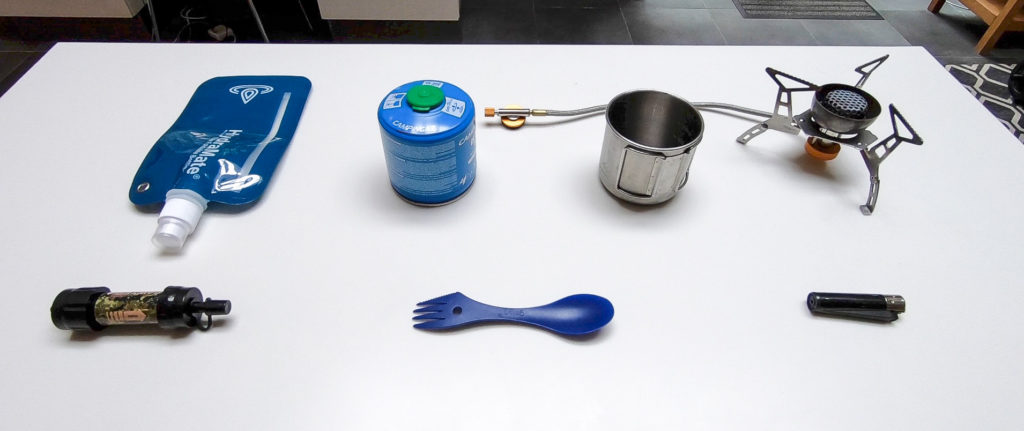

2. Breakfast
I like to keep things light in the morning with a pouch of oatmeal and a tea or coffee.
Oats are great to have first thing as you’ll load up on slow release carbohydrates that’ll fuel you for the day.
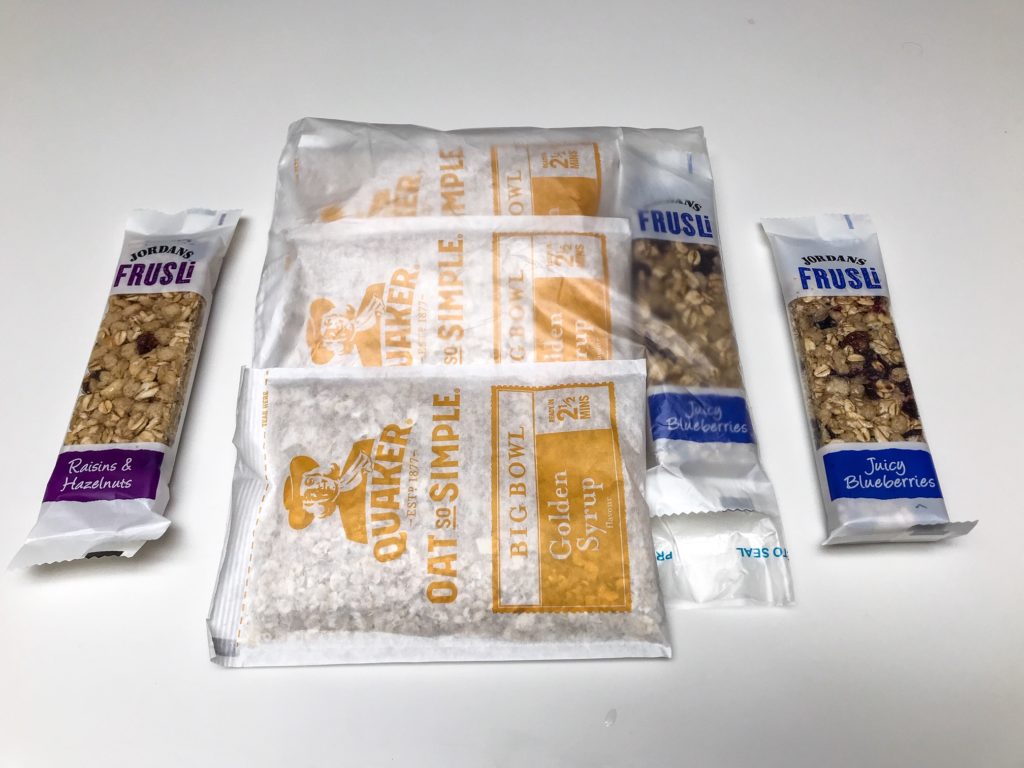

I really enjoy having a hot drink in the morning to get me up and going and to take a moment to sip and enjoy being in the outdoors!
This is where the system I showed above works quite well. The cup is 400ml and I fill this with water. I then pour about 150/200ml of that into one of the quaker oats packets. With the remaining water I add either an instant coffee packet or tea bag straight into the cup. And that’s an easy way to make breakfast whilst only boiling one cup of water!
If I’m in a rush or the weather is really bad I might just grab some trail bars or oat biscuits to eat whilst I’m walking. But that’s no fun.
3. Snacks
Generally I don’t tend to stop during the day for a lunch break. I’ll have a main meal at breakfast and dinner but throughout the day I’ll be having lots of small snacks to get me through.
The main aim here is to eat things that are lightweight, energy dense, and high in calories. It also helps if you can just grab things from your pack and eat whilst you walk.
I eat a lot of trail bars and protein bars. They often contain fruit, nuts, and oats which is a really good mix of carbohydrates, proteins, and fats. (High fat food helps with keeping your energy levels up!)
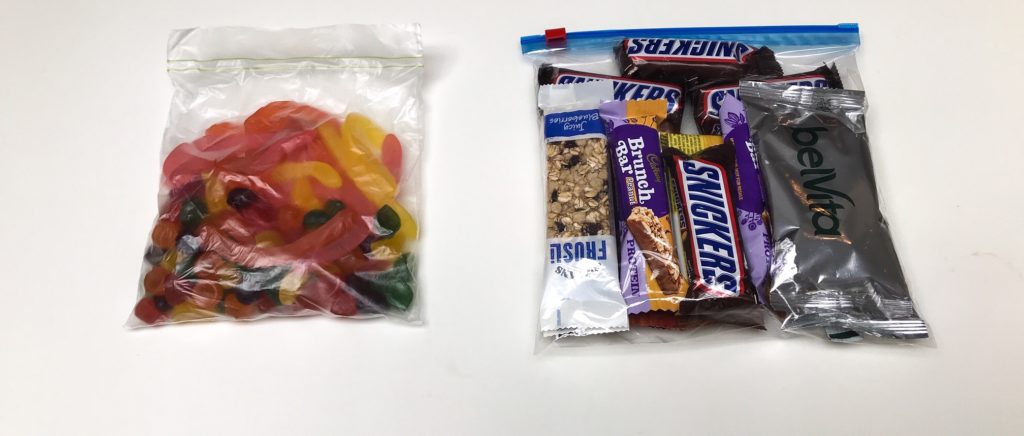

Dried fruit and nuts are both essentials. I like apricots and mangos but any dried fruit will give you that burst of energy. Bags of nuts and nut butters are very high in calories and protein which is perfect fuel for your walk and they store well.
If you’re a meat eater I recommend bringing some beef jerky with you. It lasts for ages and is high in protein and calories. Sometimes I add it to my pasta at dinner but generally it’s just good to chew on throughout the day!
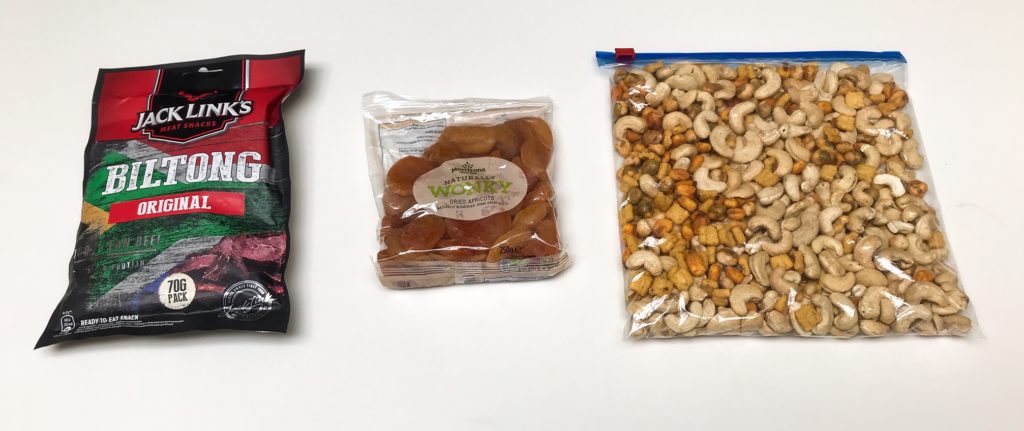

If I’m in the last stretch of my hike and my energy levels are flagging I like to have some sweets or even an energy gel to get me through the last stage. I’d keep this up your sleeve as a last resort rather than starting you day out with it. You don’t want a short sugar rush followed by a dip in energy!
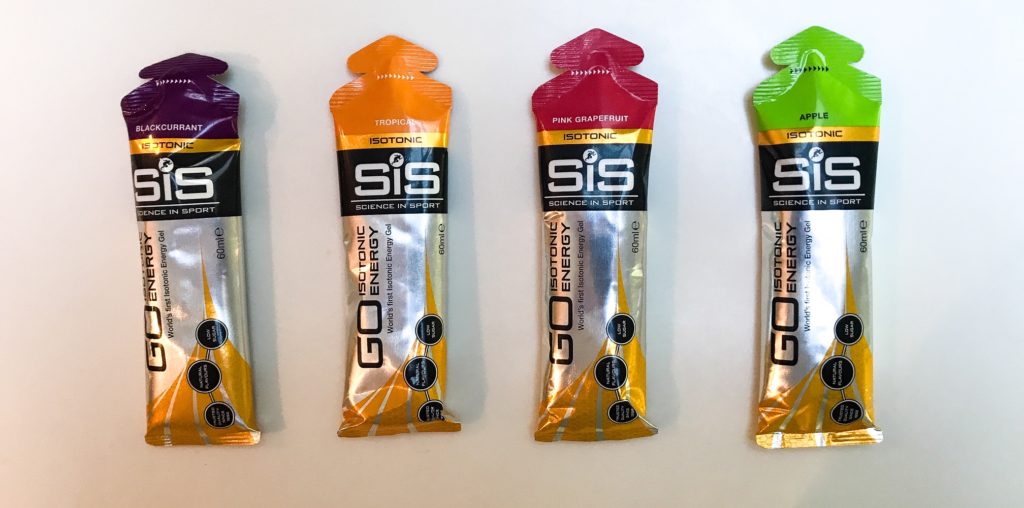

4. Dinner
I’ve experimented with a few different things and managed to settle on pasta pouches as my favourite. I think they’re lightweight, quick to make, and are easy to just add to my cooking cup with boiling water.
I’ve tried rice and noodles but find they’re either too heavy, take too long to cook, or don’t carry enough sustenance.
Also I find hiking meals and astronaut food (whatever you want to call it!) are too expensive. Whereas, these pasta pouches can be picked up from you local shop for 60p/70p.
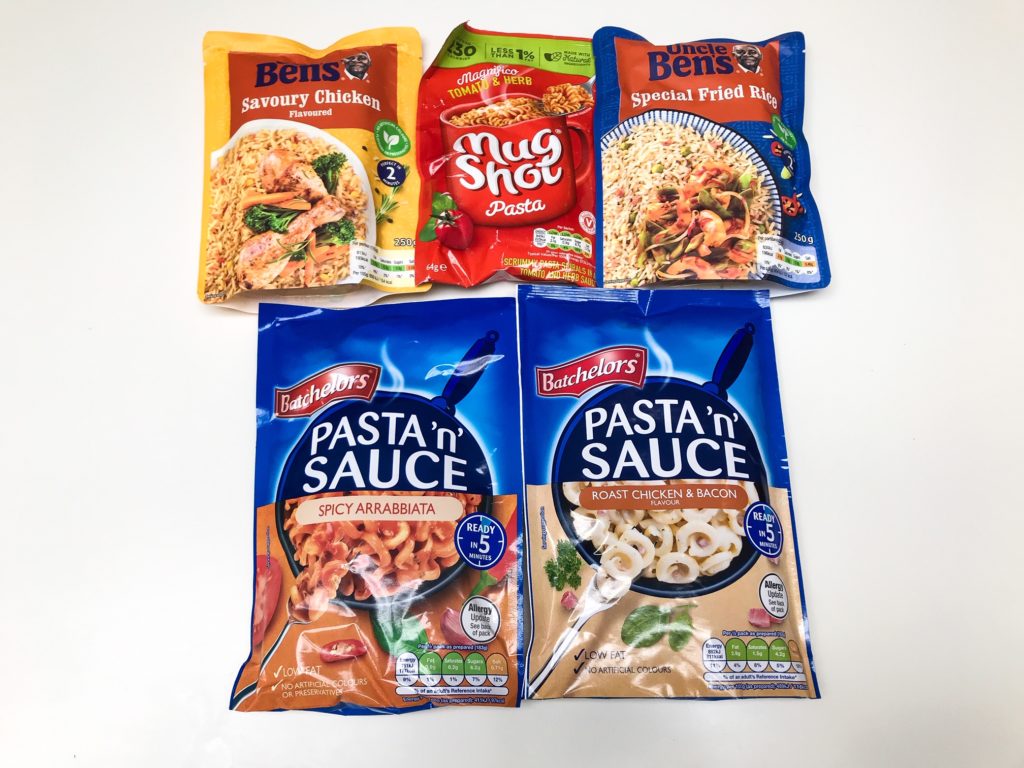

Mug shots and soup packets are also good but don’t have enough calories to really fill me up.
When you’re in the supermarket check the cooking times and see if it’s possible to just add boiling water. You basically need to avoid all fresh food and perishables. It’s possible to bring tins of tuna or beans but I’m not a big fan of fish and prefer carrying packets over tins.
Trial things out and find what suites you!
5. Drinks
Raid the supermarket section for instant coffee and hot chocolate powder. Make sure you bring a nice selection as you never know what you’re going to feel like. One thing’s for certain, a hot chocolate on a rainy day in the mountains or a steaming coffee sat in a tent on a cold morning, is a huge moral boost.
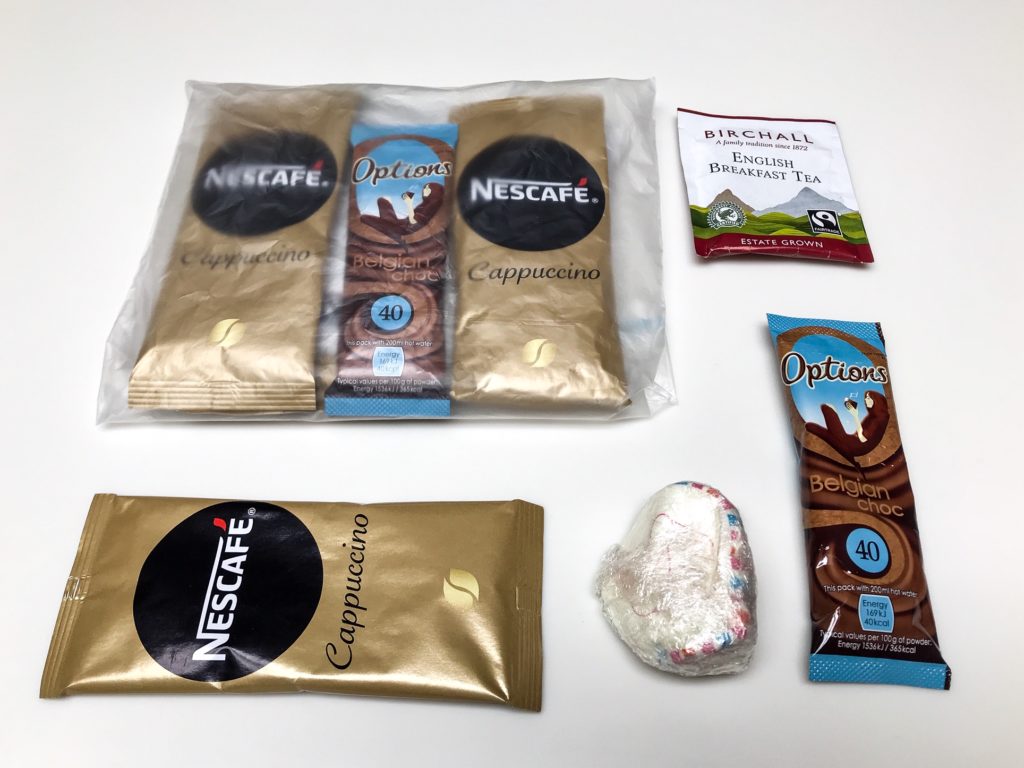

BONUS TIP: Bring a small pouch of milk powder to add to tea and coffee. It obviously stores much better and lasts longer than any other dairy products and is easy to stir into a hot tea or coffee!
I recommend using a water filter where you can as you can’t guarantee there will be safe drinking water across the whole route of your hike. As mentioned above, pairing this with a soft water bottle makes packing really easy and efficient.
You can also bring isotonic drink powders to add to your water if you want that extra kick of vitamins and minerals to keep you hydrated throughout the day!
Before You Go
Thanks for reading my tips about multi-day hiking food. If this interests you, head over to my travel guide page to find more!
If you are new to Walk Wild, check out the About Me page to learn about who I am and what made me want to be a travel writer.
Have I missed anything out? Please comment below, let me know what you think and ask if there’s anything else you want to know.
For more hiking and adventure travel, follow me on Twitter and Instagram.


